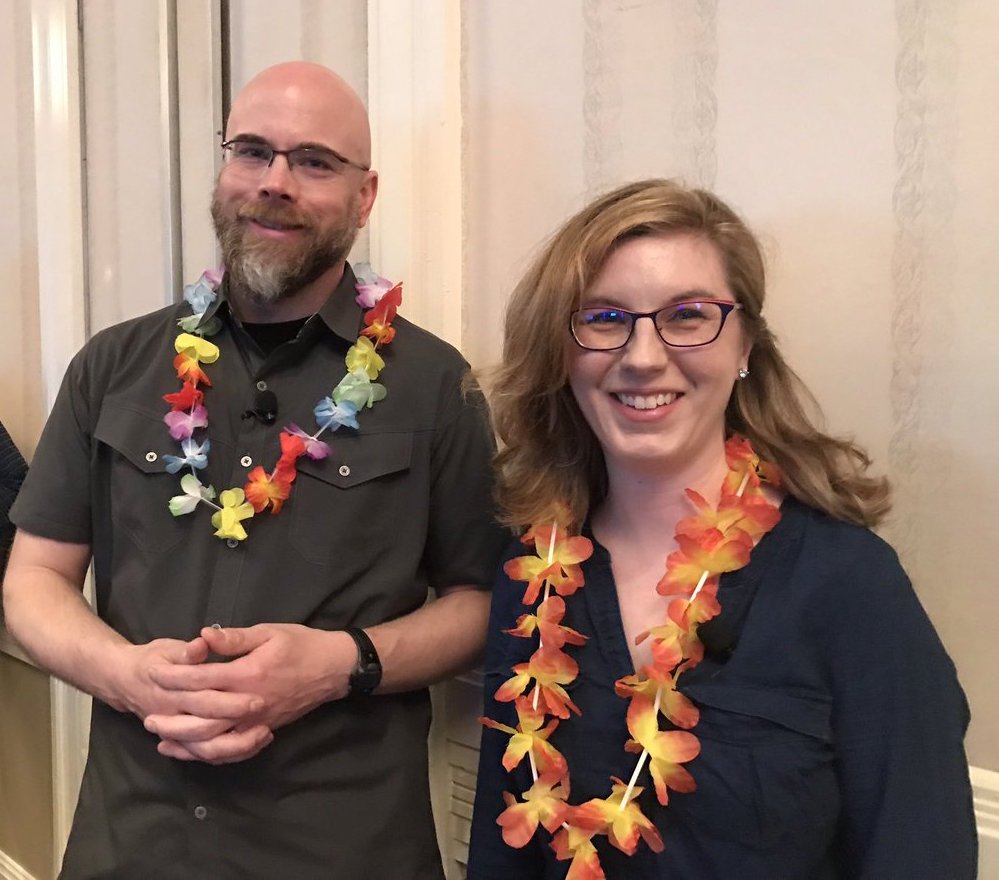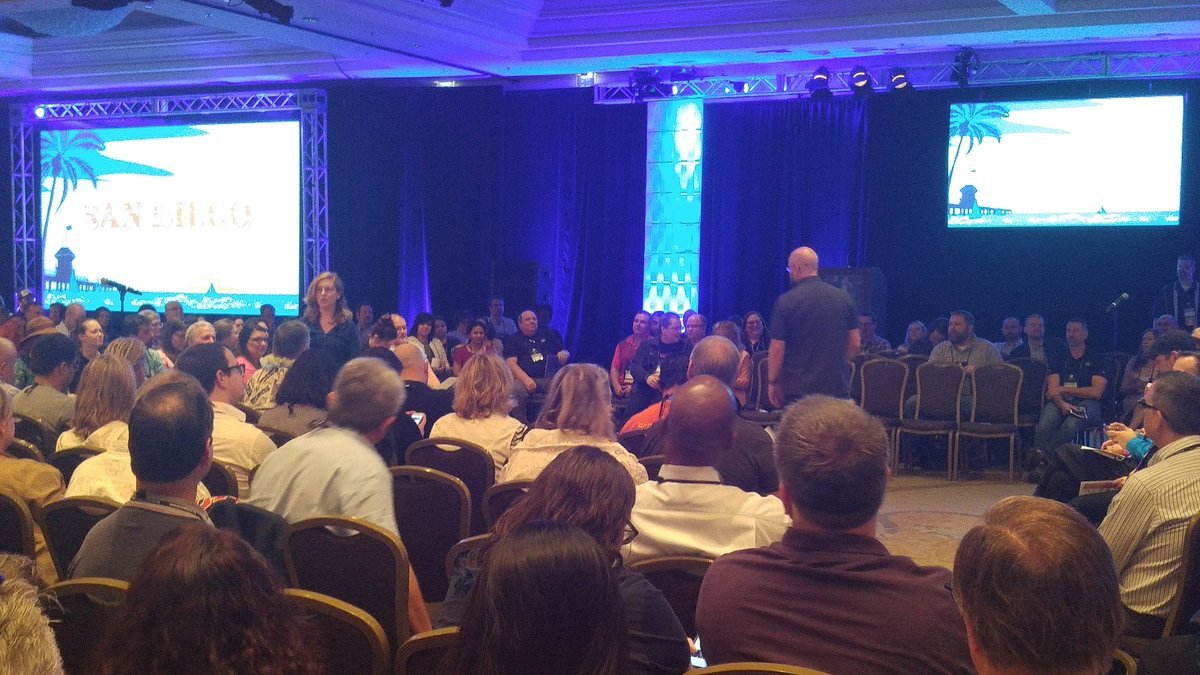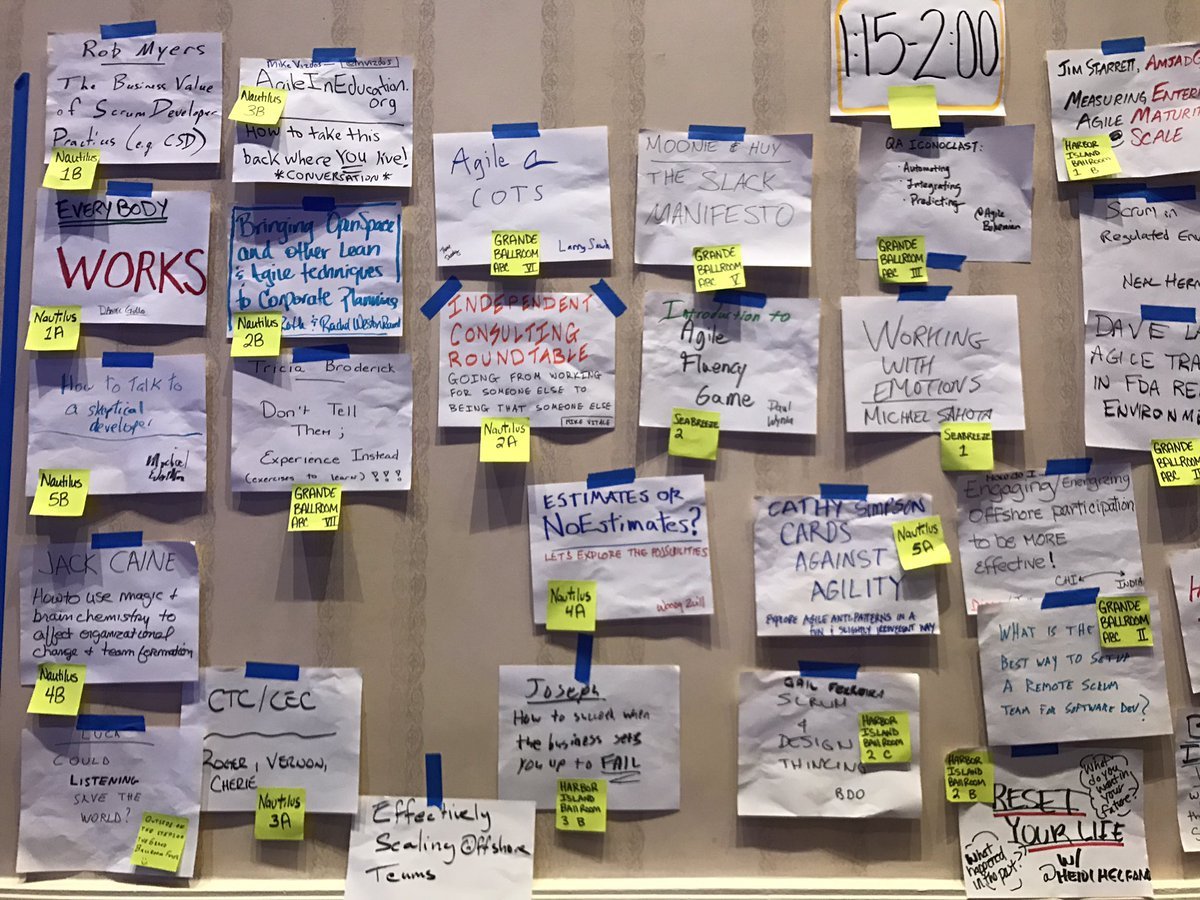How to Facilitate a Large Open Space Event
Facilitating an open space event looks easy and actually involves a lot of preparation—in advance of the event and the day-of. Planning for an appropriate room setup, thinking about how to layout the marketplace, identifying enough rooms/spaces for the group size… there’s more to it than walking around a circle and explaining the principles of open space!
Jake Calabrese and I co-facilitated the open space at Scrum Gathering San Diego earlier this year, and we had many, many conversations leading up to the event about how we could make it easy for all 1000+ people to connect and participate.
We talked about how the chairs would be setup—there was even a brief question of whether or not to have chairs. We discussed having mirrored marketplaces on two separate walls to make it easier for people to see the all of the proposed topics. We debated ways to engage the full group—all the way to the person in the last row who might not be able to see across the room. And we tossed around methods to share the principles and law of open space to connect the group with the structure.
Most of our plans were thrown away the day before the event when we saw the physical space.
And all of our planning was incredibly helpful.
Facilitating an open space can feel like taking a leap across a huge valley and hoping others will do the same. It’s significantly harder when you’re talking about a large group. Because Jake and I had spent so much time talking about—dreaming about—how we wanted the open space to be, we had developed a strong alignment to serve the group. The event was not about the two of us. As we walked around the empty ballroom with its 1100 chairs, one solid wall for posting topics, and quirky square-shaped layout (it’s hip to be square?), I wondered how we were going to bring the energy we wanted into the space.* Honestly, I was worried.
We re-imagined the marketplace setup to use one wall and allow for someone to take photos of each session time easily—that enabled for sharing on the ballroom projectors and social media. Sticky notes to indicate locations for each time were created, so people could easily identify a space for their topic; this avoided the format and readability challenges of a grid on the wall and also made it easy for additional spaces to be identified and used.
Posters were colored and hung throughout the ballroom and spaces with the principles and law of open space. Logistics were redesigned and taken care of the day before.
The morning of the event, Jake and I walked into the ballroom together. People were there and excited about the lightning talks that were going to be starting the day. And my nerves calmed. We sat together in the back corner and listened to the lightning talks. The speakers were fantastic, and the group loved the humor they sprinkled throughout. The cheesier the joke, the more they loved it. I enjoyed hearing the group laugh together and wanted to amplify it. Minutes before we opened the space, Jake and I huddled together to get clear: all of the logistics and planning and details were out of our hands (we gestured throwing that stuff away), and we chose what feeling we wanted to bring in (silliness).
We started in the center square, did not walk around the full shape, and then Jake followed his instinct to engage the back of the room by running to the back edge of the group. And I shocked him by running to the other side to engage another part of the group. In the moment, it was the only thing that could have happened. There was a group wave that was electrifying to be in the center of. We referred to the principles and law of open space that had been printed in the conference programs. The process to populate the marketplace was explained, and we got out of the way. I have never witnessed a group—especially one so large—be so organized and thoughtful in announcing topics. There were two microphones setup, and a line formed at each; they naturally alternated speaking without outside facilitation. It was beautiful.
With the marketplace populated, it was time for lunch. We’d been worried that the group would lose energy going to a break right away, and it didn’t seem to mar the day. Jake and I nearly face-planted into our meals as our bodies crashed from the adrenaline high we’d just experienced. We had been well-used in service of the group.
*If you find yourself wondering how to bring energy to a room, the secret is in the people in the room! I’d worried myself silly because I’d been sitting in an empty room the day before. The warmth and enthusiasm of real, live humans is far easier to work with than a room full of empty chairs.








